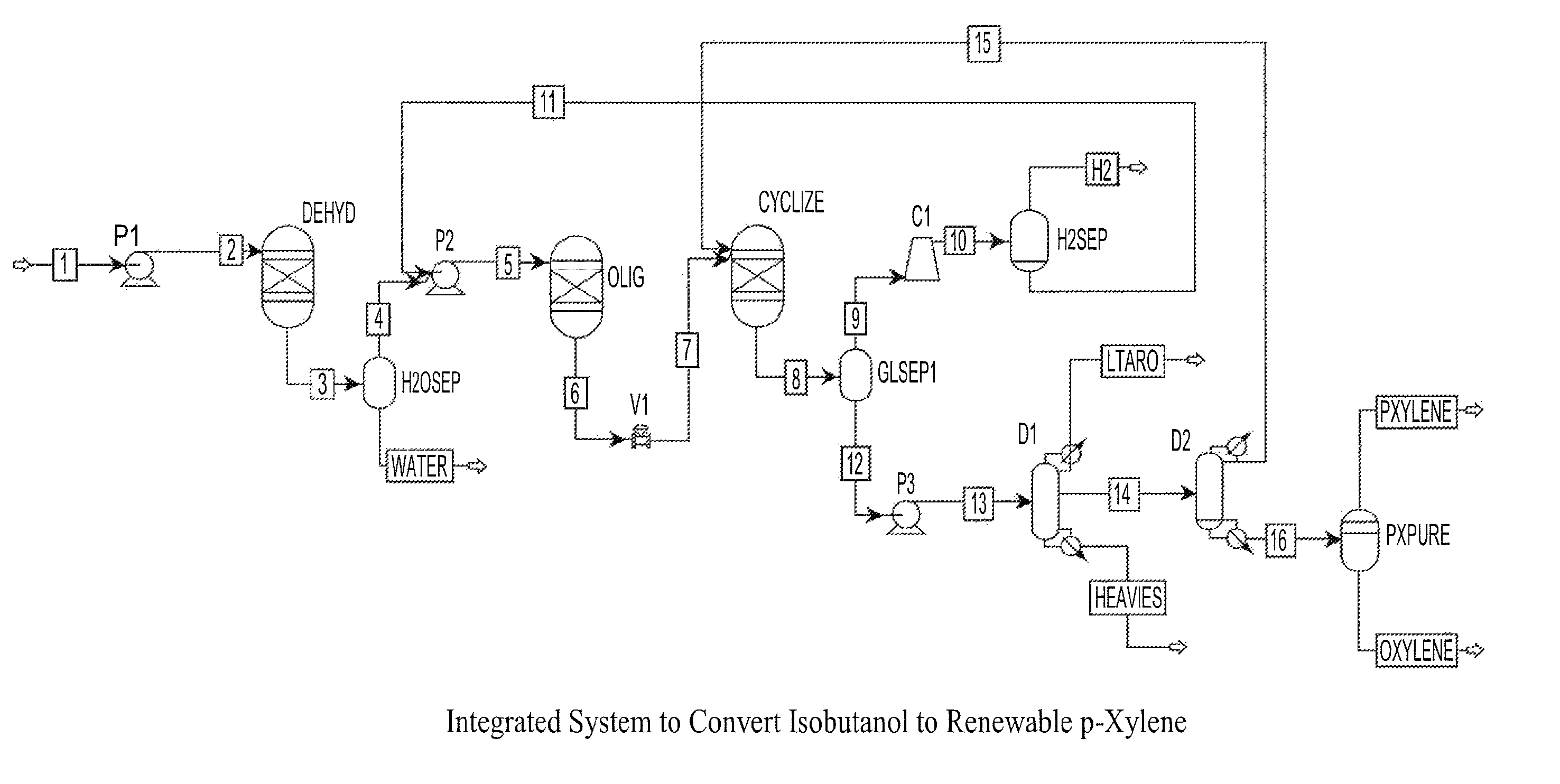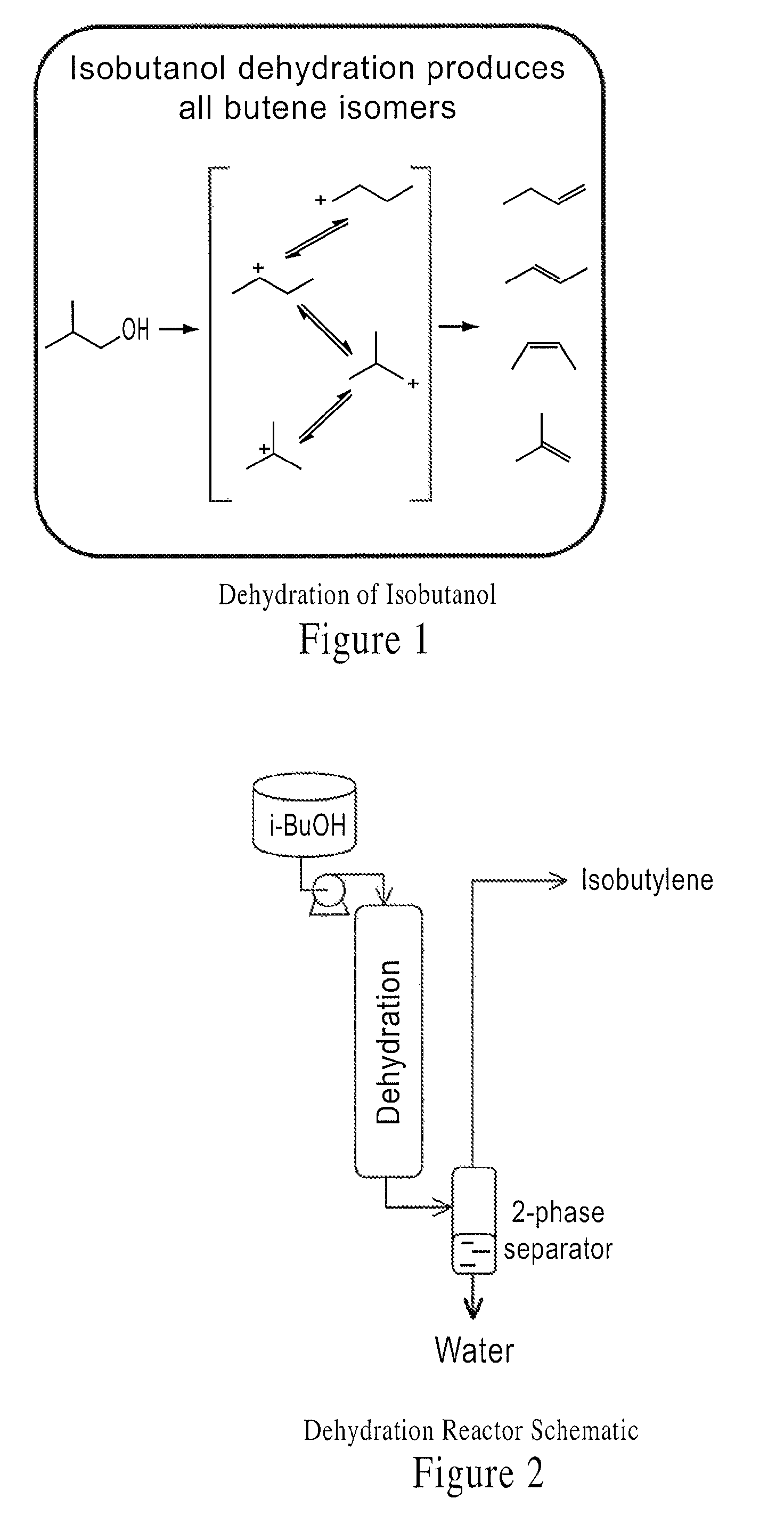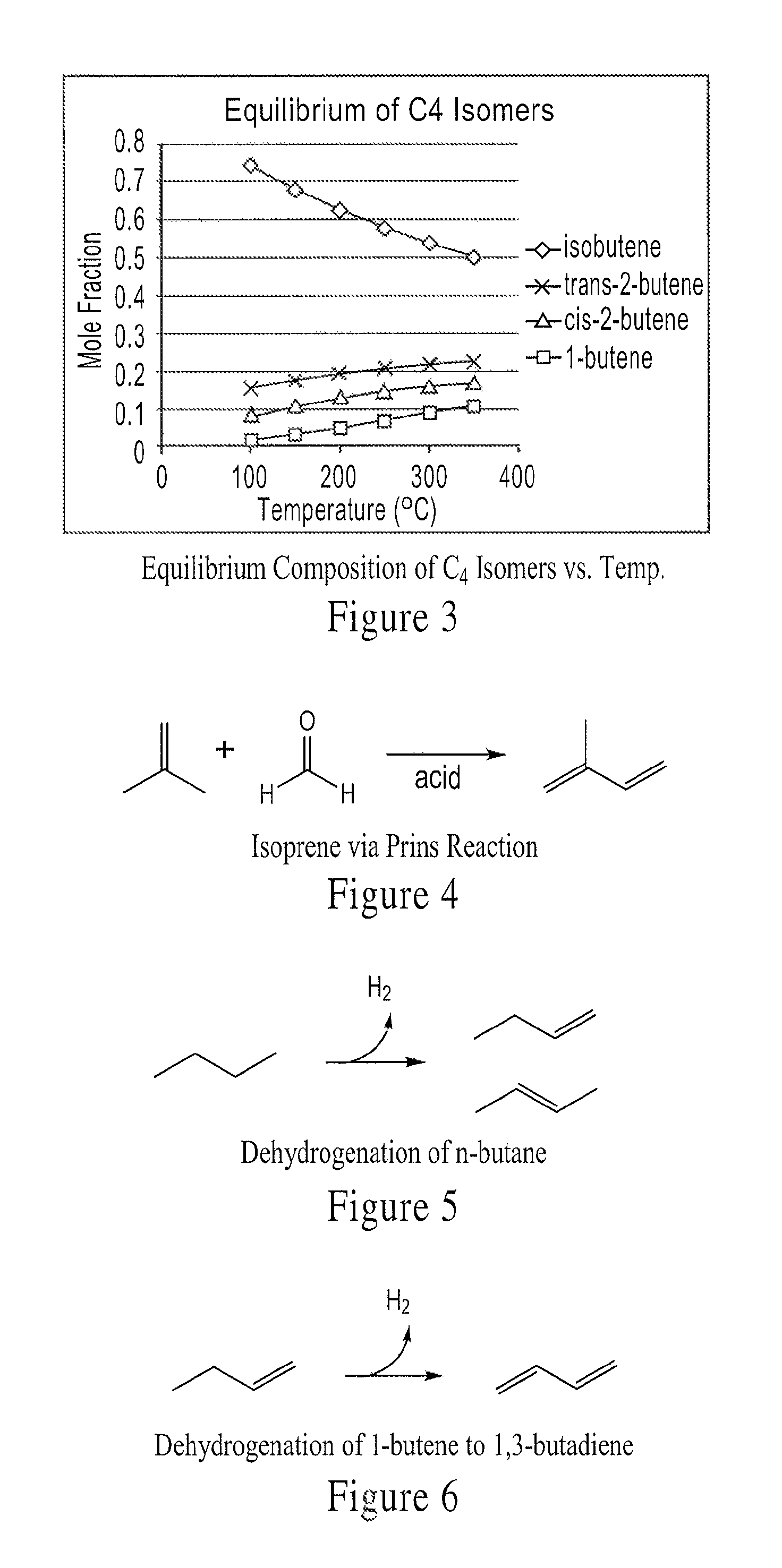Integrated methods of preparing renewable chemicals
a technology of renewable chemicals and integrated methods, applied in the field of integrated methods of preparing renewable chemicals, can solve the problems of difficult location, difficult to adapt to the environment, and difficult to meet the needs of the environment, so as to achieve the effect of flexibly adapting and adapting quickly
- Summary
- Abstract
- Description
- Claims
- Application Information
AI Technical Summary
Benefits of technology
Problems solved by technology
Method used
Image
Examples
example 1
Production of Isobutanol from Lignocellulosics
[0177]A cellulosic material consisting of 45% cellulose, 25% hemicellulose, 22% lignin and 8% other materials is pretreated to yield a slurry of 8% insoluble cellulose with about 4% insoluble lignin, 1% glucose, 40 g / L xylose, 2 g / L mannose, 2 g / L galactose, 1 g / L arabinose, 5 g / L acetic acid in solution. The slurry is fed into an agitated saccharification and fermentation vessel and charged with cellulase enzyme sufficient to hydrolyze 80% of the cellulose 72 hours. A microorganism known to ferment glucose, xylose, mannose, galactose and arabinose to isobutanol is added to the fermentation, and the vessel is agitated for 72 hours. Isobutanol produced by the fermentation is separated from the fermentation broth by distillation. The first isobutanol-containing distillation cut contains 20% w / w isobutanol and 80% w / w water that condenses to form two phases—a light phase containing 85% isobutanol and 15% water and a heavy phase containing 8...
example 2
[0178]Isobutanol obtained in Example 1 was fed through a preheater and to a fixed-bed tubular reactor packed with a commercial dehydration catalyst (BASF AL3996). The internal reactor temperature was maintained at 300° C. and the reactor pressure was atmospheric. The WHSV of the isobutanol was 6 hf−1. Primarily isobutene and water were produced in the reactor and separated in a gas-liquid separator at 20° C.; the water had 1% of unreacted isobutanol and conversion was 99.8%. GC-MS of the gas phase effluent indicated it was 96% isobutene, 2.5% 2-butene (cis and trans) and 1.5% 1-butene.
example 3
Dehydration of Isobutanol
[0179]Isobutanol obtained in Example 1 is fed through a preheater and to a fixed-bed tubular reactor packed with a commercial dehydration catalyst (e.g., an X-type zeolite). The internal reactor temperature is maintained at 370° C. and the reactor pressure is atmospheric. The WHSV of the isobutanol is 3 hr−1. A mixture of C4 olefins and water are produced in the reactor and separated in a gas-liquid separator at 20° C.; the water has 99.8%. GC-MS of the gas phase effluent indicates it is 50% isobutene, 40% 2-butene (cis and trans) and 10% 1-butene.
PUM
| Property | Measurement | Unit |
|---|---|---|
| temperatures | aaaaa | aaaaa |
| boiling points | aaaaa | aaaaa |
| boiling points | aaaaa | aaaaa |
Abstract
Description
Claims
Application Information
 Login to View More
Login to View More - R&D
- Intellectual Property
- Life Sciences
- Materials
- Tech Scout
- Unparalleled Data Quality
- Higher Quality Content
- 60% Fewer Hallucinations
Browse by: Latest US Patents, China's latest patents, Technical Efficacy Thesaurus, Application Domain, Technology Topic, Popular Technical Reports.
© 2025 PatSnap. All rights reserved.Legal|Privacy policy|Modern Slavery Act Transparency Statement|Sitemap|About US| Contact US: help@patsnap.com



